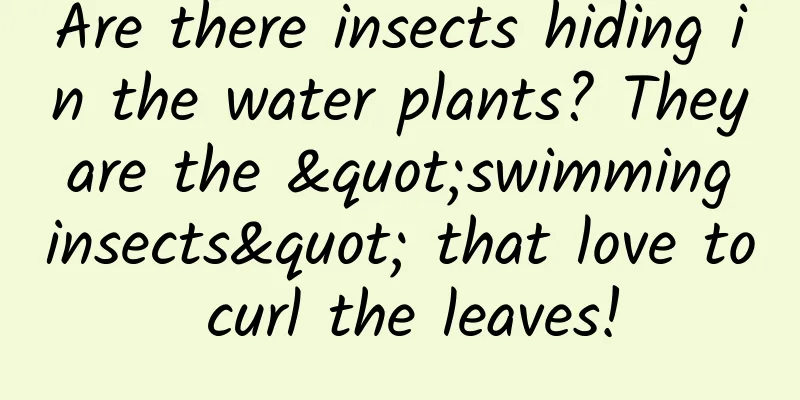What kind of soil can increase your worth? Answer: Moon soil!

|
After shopping, many people will jokingly say "I'm going to eat dirt." However, have you ever wondered what the dirt on the moon tastes like? Has anyone ever eaten it? Public information shows that several animals have indeed eaten it. In June this year, an auction was held in the United States. The main items of the auction were three cockroaches that had eaten dirt. The estimated price given by the auction house was US$400,000. Three German cockroaches. Image source: Screenshot from RRauction What's going on? Why are three cockroaches that ate dirt so valuable? It turns out that they eat the "moon soil" brought back by humans after the first landing on the moon. In 1969, when Armstrong first landed on the moon on Apollo 11, he brought back 21.6 kilograms of lunar samples when he returned to Earth, including 50 rocks, weathered soil from the lunar surface, and two tubes of core samples collected from 13 centimeters below the lunar surface. Photo of astronauts collecting core samples in the lunar module. Image source: The US National Archives The lunar samples transported back to Earth are used for various scientific research. One of their uses is something you would never imagine: feeding the lunar soil to animals such as German cockroaches to see what happens to them. Maybe you are wondering, is this experiment necessary? It is indeed necessary. Considering the first landing on the moon, people knew nothing about the conditions on the lunar surface, and whether it contained substances that were harmful to life. When the Apollo 11 crew returned to the ground, they were quarantined for 21 days (does it look familiar?) to prevent them from carrying potential pathogens back to Earth. The lunar soil was also isolated when it arrived on Earth, but in a vacuum chamber. The scientist in charge of this experiment is Marion Brooks, an associate professor of entomology and NASA's resident special consultant on entomology. She received about 18 kilograms of lunar soil and conducted experiments in the Lunar Receiving Laboratory (LRL). News report of Marion Brooks receiving lunar soil. Image source: RRauction The experiment was not complicated. Ten different kinds of animals were kept in different aquariums, including Euglena, Paramecium, Turbellaria, Oysters, Brown Shrimp, German Cockroach, Housefly, Greater Wax Moth, Fathead Minnow, and Canadian Killifish (a small fish), ranging from invertebrates to vertebrates. These animals were chosen because they are common, easy to care for and handle. The key point is that scientists have done in-depth research on these animals, so scientists are familiar with every stage of their life history. After grinding the lunar soil into particles with a diameter of about 2 microns, half of the samples were sterilized at 160°C for 16 hours. Two weeks before the formal experiment, all experimental animals were kept in sterile plexiglass cabins to allow them to adapt to the living environment. Two experimental groups and two control groups were set up for each animal: one group in the experimental group ate sterilized lunar soil, and the other group ate unsterilized lunar soil; in the control group, one group was fed normal food but was raised in a glass cabin, and the other group was fed normal food and raised in a normal environment, serving as the control group of the control group. The lunar soil after grinding. Image source: RRauction Experiment notebook, Image source: RRauction The results were unexpected. No experimental animals died from eating lunar soil, regardless of whether the lunar soil was disinfected or not. Instead, six days before the experiment officially began, nearly half of the fathead minnows, which were still in the process of adapting to the environment, died because scientists accidentally sprinkled some sodium hypochlorite into the fish tank. Even among the survivors, some had long-term lesions caused by residual sodium hypochlorite. Do you think these animals can survive after the experiment? No, all animals need to be dissected and microscopically sliced for more detailed physiological analysis to determine what effects they have on their bodies. The stained tissue sections of that year, image source: RRauction Brooks dissected the experimental cockroaches and made histological sections. Surprisingly, the cockroaches showed no pathological changes at all, and nothing was wrong. Everything was normal. Obviously, the experiment did not find any microorganisms in the lunar soil. The reason why it is surprising that Xiaoqiang is not dead is that although the lunar soil is non-toxic, it looks harmful in terms of physical properties. The difference between the lunar soil and the earth's soil is huge. The lunar soil is the residue of a micro-meteorite impact. Since there is no air or water erosion, each particle of dust has sharp edges and looks like broken glass. Microscope view of lunar soil simulant made by NASA. Image source: IMPACT lab Even after grinding, the lunar soil still retains its sharp jagged edges. Imagine what would happen if you ate a stomach full of broken glass. But the cockroaches ate the "glass" and their stomachs were fine. Cockroach intestinal slices show no evidence of wear. Image source: Reference [1] Microscopic tissue sections of the small fish intestine showed no pathological effects. Image source: Reference [1] Brooks repeated the same experiment in the lunar soil samples brought back by Apollo 12 and 13, because the lunar soil was collected from different locations, but the results were the same. On July 31, 1970, the results of this experiment were published in the journal Science, titled "Apollo 11: Exposure of Lower Animals to Lunar Material". Image source: RRauction More than 50 years later, this legendary research has once again come to the public, but in a different form. Recently, a treasure is being auctioned at RR Auction House in Boston: Items being auctioned, image source: RRauction The Apollo 11 lunar soil experiment includes a vial of experimental cockroach tissue sections, three well-preserved German cockroach experimental specimens, lunar soil taken from the cockroach digestive tract, and some historical materials related to the moon landing. Histological specimens of the control group and the experimental group, a total of 66 glass slides are also included in the auction. Lunar soil may not be rare, but lunar soil that is eaten by cockroaches and turned into chyme is truly unique. However, NASA officials said that the cockroaches and other space materials auctioned this time were taken home by researchers without permission and should be returned to NASA as soon as possible. The auction has been suspended. Glass bottles used in the experiment, Image source: RRauction References: [1]https://www.science.org/doi/10.1126/science.169.3944.470 [2]https://www.rrauction.com/auctions/lot-detail/345900206383032-apollo-11-lunar-soil-experiment-cockroaches-slides-and-post-destructive-testing-specimen-/?cat=65 Source and author: Science Institute, Su Chengyu This article has been authorized. Please contact the original author for reprinting. The cover image of this article is from the copyright gallery, and the image content is not authorized for reproduction |
<<: It’s trending again! But “food incompatibility” is really unreliable!!!
>>: What to wear to keep cool in summer? Of course, it's the "shroud"!
Recommend
The efficacy and function of the sesame oil jar
As we all know, sesame oil jar is a very common m...
The efficacy and function of Cimicifuga
Cimicifuga is a relatively familiar traditional C...
How does anthocyanin work?
Many people may not have heard of fruit anthocyan...
How to take He Shou Wu tablets
The Polygonum multiflorum that we often see in ou...
Who should eat Cordyceps?
The full name of Cordyceps is Cordyceps sinensis,...
Do you think you know what kumquat is? Actually, you don’t
Tony Harrison, a famous British left-wing poet, o...
The effects and functions of thornberry root
As for thornberry root, I think some people may h...
How to eat Cordyceps
Cordyceps is a very nutritious and precious medic...
There are five kinds of lotus leaves and five names. If you know one of them, you are awesome.
The growth and development of lotus has regularit...
Panda was once a name that only belonged to the red panda...
Original title: "The Neglected Life of the R...
The efficacy and function of sheep bones
The world is full of wonders, and Chinese medicin...
Is Chinese medicine effective in treating colitis?
Many people should have heard of colitis. If coli...
HPV, cancer, locally advanced stage, radiotherapy... At the age of 58, it feels like I have lived my life again
Cervical cancer - the number one malignant tumor ...
Wild golden thread lotus pictures
Wild golden thread vine is divided into natural w...
The efficacy and function of flat bamboo
As a very common Chinese medicinal material in da...









